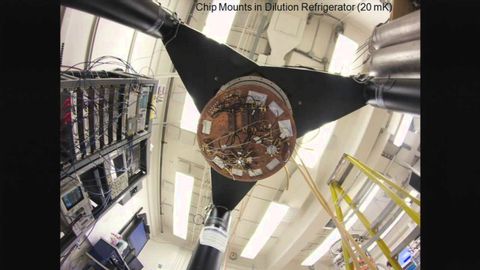技術講座。 John Martinis "超導量子計算機的設計" (Tech Talk: John Martinis, "Design of a Superconducting Quantum Computer")
Daniel Yang 發佈於 2021 年 01 月 14 日  沒有此條件下的單字
沒有此條件下的單字- n.(馬)嚼口;馬勒;一小片 ; 少量 ; 一點;位元;鑽頭;小錢;一段經歷
- v.i.咬住(誘餌)
- adv.有點
- v.t.咬 (過去式)
- idiom一點也不;盡一份力
- n. (u.)節拍;(準確的)時間;時間(多寡);(經歷的)一段時光;(經歷的)時光;時代;時期;時間;時刻;時候
- v.t.測量(節拍);為...計算時機;計時;測量時間;使適時;安排...的時間
US /ˈbesɪkəli,-kli/
・
UK /ˈbeɪsɪkli/
- n. (c./u.)州;狀態
- adj.政府的;州的
- v.t.陳述,說明,聲明

